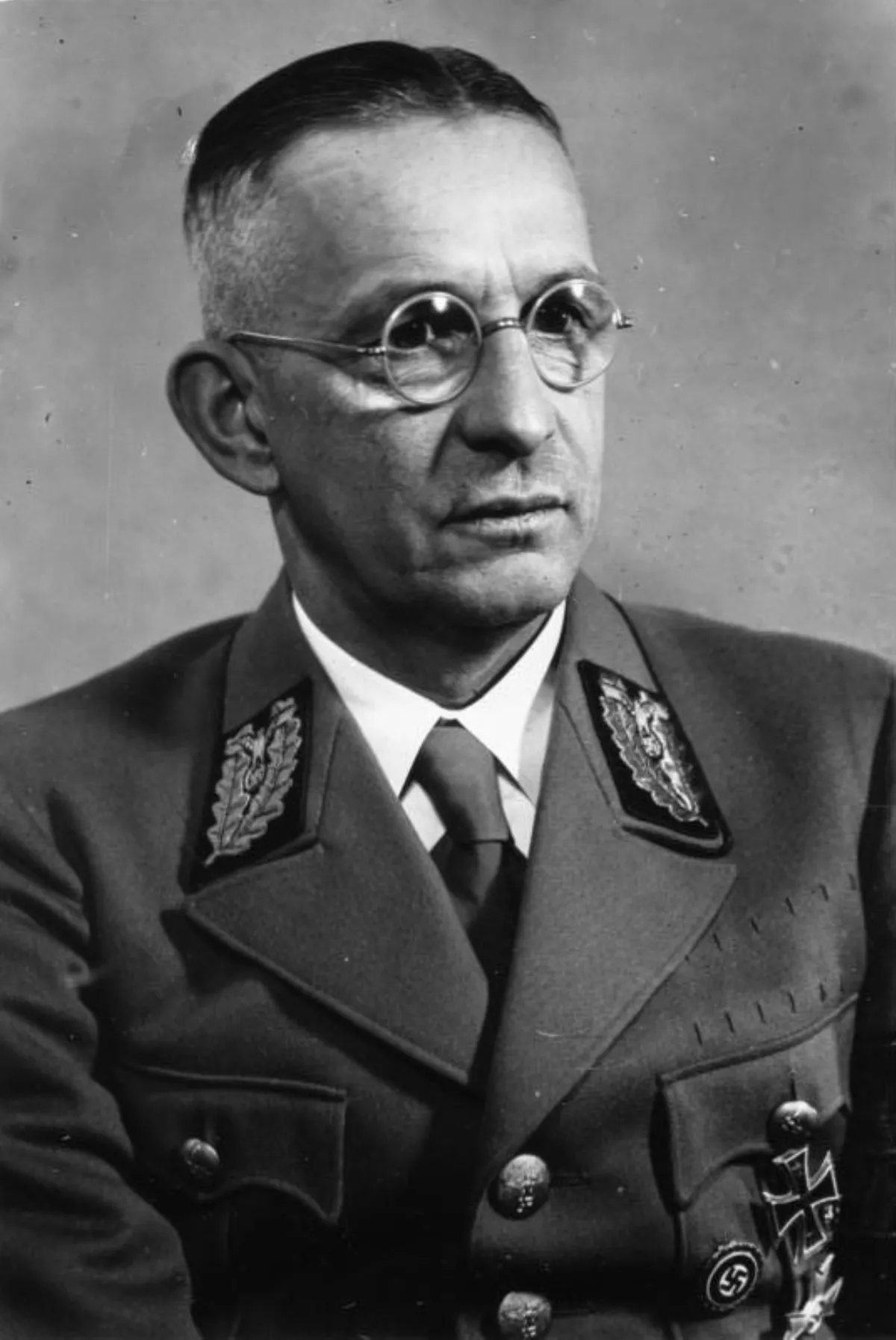 1.
1. Gustav Alfred Julius Meyer was a Nazi Party official and politician.

 1.
1. Gustav Alfred Julius Meyer was a Nazi Party official and politician.
Alfred Meyer joined the Nazi Party in 1928 and was the Gauleiter of North Westphalia from 1931 to 1945, the Oberprasident of the Province of Westphalia from 1938 to 1945 and the Reichsstatthalter of Lippe and Schaumburg-Lippe from 1933 to 1945.
Alfred Meyer represented the ministry with Georg Leibbrandt in the January 1942 Wannsee Conference, at which the genocidal Final Solution to the Jewish Question was planned.
Alfred Meyer was born in Gottingen, the son of a Prussian civil servant who was stationed there for his official duties.
Alfred Meyer was educated at the Gymnasium in Soest, graduating in 1911.
Alfred Meyer passed his officer exam and was commissioned as a Leutnant on 16 June 1913.
Alfred Meyer graduated with a PhD in 1922 and joined the legal department of a Gelsenkirchen mining firm.
Alfred Meyer married Dorothee Capell in 1925 and had five daughters with her.
In September 1930, Alfred Meyer was elected to the Reichstag from electoral constituency 17, North Westphalia, and on 31 January 1931, he was appointed the Nazi Party Gauleiter of the newly-formed Gau Westphalia-North.
Alfred Meyer became the editor of the local Party newspaper, the Westfalische Landeszeitung Rot-Erde.
Alfred Meyer was returned to the Reichstag at the election of 12 November 1933, retaining his seat until the fall of the Nazi regime.
Alfred Meyer was named a Minister of State in the Schaumburg-Lippe government of Landesprasident Karl Dreier.
On 6 September 1939, Alfred Meyer was made Chef der Zivilverwaltung in the West.
Alfred Meyer was responsible for the departments of politics, administration and economics.
On 20 January 1942, Alfred Meyer was Rosenberg's representative at the Wannsee Conference, which was called to discuss the implementation of the Final Solution.
Alfred Meyer made plans to construct a "Westphalia Wall" to serve as a defensive position but the Allied assault proved unstoppable, and Munster fell to the combined British and American forces on 3 April 1945.
In mid-May 1945, a body, decomposed beyond recognition but later determined to be Alfred Meyer, was found in Hessisch Oldendorf by the River Weser.